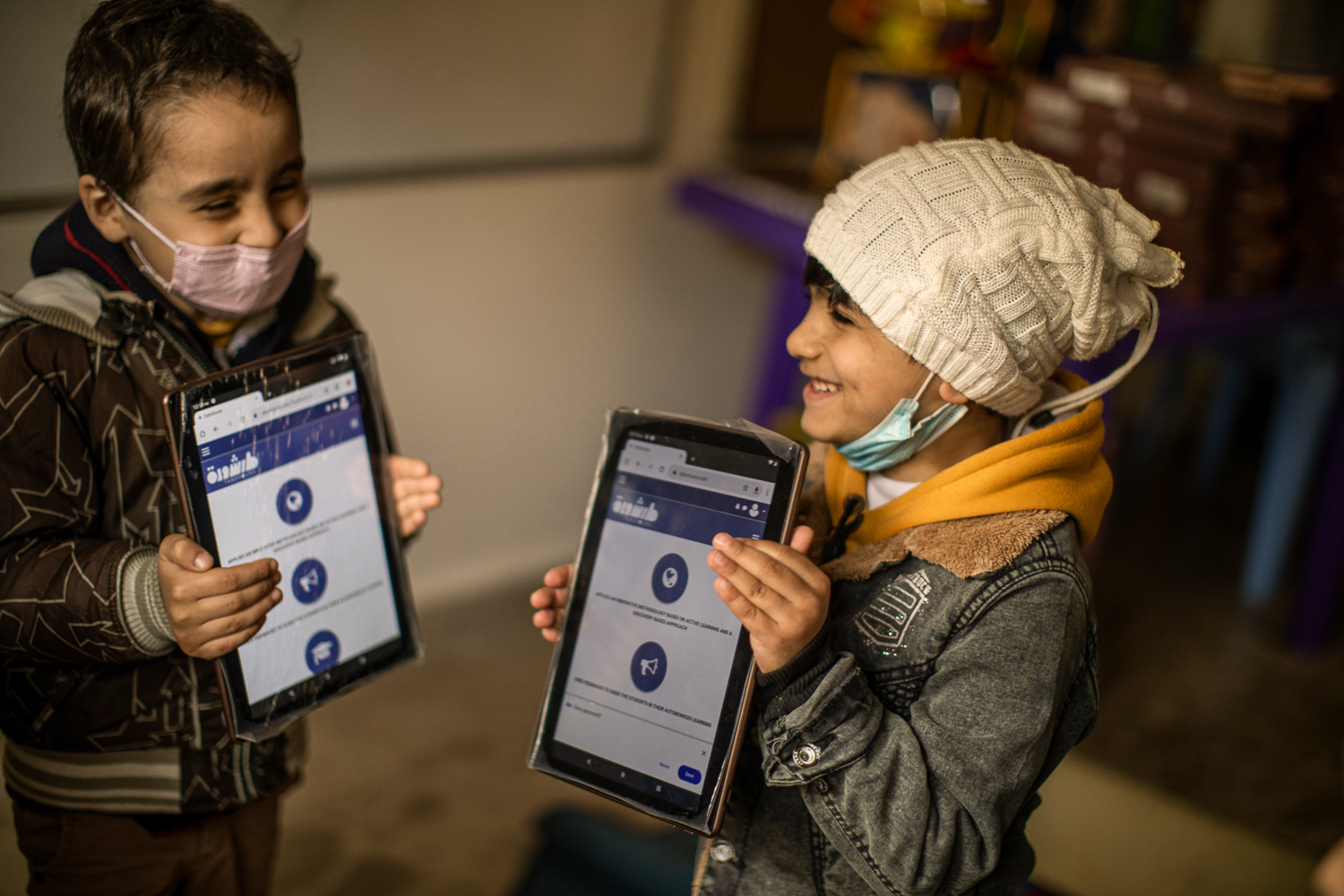
Education and Digital Society
Exploring a career in media, the digital arts, or creative industries? Researching the potential for digital learning platforms to spread quality education far and wide? Crafting your dissertation on the ways in which artificial intelligence will alter human society? Use the tools on this page to learn how education spurs innovation and lays the foundation for learning and work for generations to come.
Advancements in technology make it possible to share information and ideas, and learn in remote corners of the globe, dramatically expanding quality educational opportunities for the most marginalised. With the increasing risk of automation, job displacement, skills mismatch and precarious livelihoods, never before has it been more imperative to transform the education system to prepare young people for the future of work.
Looking for questions to centre your research efforts or interesting issues or problems to explore? These research questions can help provide a path to a focused research and writing process.
- How can technology accelerate access to education?
- How can technology improve access to quality education for those most marginalised, refugees, and migrant populations?
- How can technology be taken to scale to improve access to quality education?
- Is technology a cost-effective means of delivering education?
- How can technology help to deliver education in times of emergency or unprecedented situations?
- Do disparities exist in terms of who is able to access technology or digital platforms?
- How has technology been used successfully to provide quality education?
- Can technology help to democratise education?
- If children can’t go to school full time, is it worth bothering with alternative forms of education?
Looking for clear topic sentences to express your opinion, or thesis statements to serve as the core of your essay? Theirworld’s examples can help to form the base of your argument.
Overall
- With the increasing risks of automation, job displacement, and a skills mismatch, it is imperative to transform the education system to prepare young people for the future of work
- Not investing in new and innovative ways of delivering training, skills and education through emerging technology will result in many youth falling further behind
- Young people are more likely to use digital tools for education and skill building
- The gender gap in the digital divide is more pronounced in poorer countries
- The digital divide affects all countries
- The digital divide has direct and detrimental impact to equity in education
- The global education gap can be addressed in a meaningful way through the improved use of technology and digital solutions
- The pandemic has proven that teachers can effectively provide quality education in times of emergency
Digital platforms
- Advancements in technology make it possible to learn in remote corners of the globe without physically going to school
- Investing in inclusive digital access – and getting every school and student equipped to be online – will dramatically expand educational opportunities
- Those most marginalised, the poor, women and those in rural areas, have significantly less access to the internet, further compounding their ability to access quality education and develop skills relevant to the future of work
- Increasing access to education and skills development through technology, particularly for ‘21st century skills,’ can offer opportunities and level the playing field for displaced youth
- The recent global pandemic has exposed wide inequities in access and learning based on limited connectivity
- Closing the digital divide is essential to providing universal access to high-quality and inclusive learning opportunities
- A variety of innovative ways to deliver education during a pandemic exist, ranging from distance instruction with radio, television and phones to online education and reduced capacity in-person instruction
- Information and communications technology (ICT) can offer viable solutions to bridge the skills gap and provide youth with new ways to access learning and rebuild their futures and communities
Jobs and skills
- Employment in the future will place an increased premium on digital literacy
- Greater investment in education will help systems respond to an increasingly digital society and prepare young people for work and life in the future
- Education that emphasises skills for a rapidly transforming world — curiosity, creativity, critical thinking, problem solving, social-emotional skills, digital literacy, and systems analysis — will be of particular value in the workforce
- Closing the skills gap unleashes economic potential. If education systems successfully address the skills gap for the future of work, as much as US$11.5 trillion can be added to global GDP by 2028
- Employers are increasingly finding it difficult to find workers with the flexible and adaptable skills needed for the Fourth Industrial Revolution (4IR)
- Access to relevant education focused on skills for the future of work and life can have a tremendous impact on providing a pathway to employment opportunities for young people
- Education can provide quality, inclusive learning opportunities to develop relevant skills for the future of work
Seeking key messages, facts, and opinions to build your evidence base? Find the most up-to-date, pre-sourced data points to help you make a robust case for education and digital society here.
Challenges
Access
- In the poorest countries, household access to the internet is extremely limited. In the least developed countries, only 12% of households have internet access at home. (GEM, 2020)
- There are large gaps in access to the internet for girls and those living in rural areas. Women are 17% less likely than men to use the internet in the Arab States and Asia and 25% less likely in Africa. (GEM, 2020)
- The gender gap in the digital divide is more pronounced in poorer countries. Girls and women are 23% less likely than boys and men to be able to use mobile internet in low and middle-income countries. (Save the Children, 2020)
- The digital divide affects all countries. About 14% of US households with school-age children do not have internet access. (National Telecommunications and Information Administration, 2018)
- Teachers are concerned about the digital divide’s impact on equity. 84% of teachers fear technology is widening the gap between affluent and disadvantaged schools and districts. Nearly one in five students said they had trouble completing homework because of internet access issues. (Pew Research Center, 2013)
- Access to devices and connectivity at home impacts educational outcomes. Even before Covid-19, one in five teenagers aged 13 to 17 in the US said they are often or sometimes unable to complete homework assignments because they do not have reliable access to a computer or an internet connection. (Pew Research Center, 2018)
- In an increasingly digitised education world, girls often have decreased access to the internet and technology platforms, and have lower ICT skills, reducing their ability to access and benefit from remote learning. (Lindsey, 2020) (Fatehkia et. al., 2018) (Amaro et. al., 2020)
Distance and remote learning
- The pandemic put the challenges of the digital divide front and centre. Approximately 60% of national distance learning alternatives developed during Covid-19 relied on on-line learning platforms, yet 47% of the students targeted lacked internet access. Just one in six of the poorest children globally had access to the internet during the pandemic. (UNESCO, 2022) (UNICEF & ITU, 2020)
- Distance learning rates are linked to household income. Only 60% of low-income students are regularly logging into online instruction, compared with 90% of high-income students. (Dorn et al., 2020)
- Distance education requires innovative solutions to overcome the digital divide. Only 47% of households in developing countries and 12% in the least developed countries have access to the Internet at home. Even in countries with wide Internet access, such as Italy, one in four households lack a strong enough connection to download and stream education content. (GEM, 2020)
- Differences in access to remote learning opportunities during the pandemic were extreme. Just 6% of students in Africa would have been able to attend classes online, whereas online platforms were used in 96% of high-income countries. (UNESCO et al., 2021) (GEM, 2021)
Skills and jobs
- It is estimated that by 2030 more than half of young people worldwide will not have the basic skills or qualifications necessary for the workforce. (Education Commission, 2016).
- Just a few years ago, technologies associated with the 4IR were projected potentially to displace more than five million jobs by 2020, most of the loss concentrated in low- and middle-skill jobs. (Deloitte & GBCE, 2018) (McKinsey, 2017)
- The global skills mismatch is currently estimated to affect two in five employees in OECD countries, costing the global economy 6% every year in terms of lost labour productivity. (Boston Consulting Group, 2020)
- Employment in the future is likely to place an increased premium on digital literacy. 84% of multinational and large national companies surveyed reported being ready to digitise work. Yet the percentage of adults with basic spreadsheet skills is 7% in lower-middle-income countries, 20% in upper-middle-income countries, and 40% in high-income countries. (GEM, 2020) (World Economic Forum, 2020)
- As digital skills become essential for the future of work, the gender gap persists. In the European Union in 2016, only one in six students in information and communications technology (ICT) were female. (ILO, 2020)
- The intersection between gender and poverty in determining digital literacy is especially worrying. In seven low- and lower-middle income countries, fewer than 1% of women in the poorest 60% have spreadsheet skills. (GEM, 2020)
Messages
Distance and remote learning
- Young people are more likely to use digital tools for education and skill building. They are twice as likely as adults to self-study or seek online training for digital skills acquisition. (GEM, 2020)
- Digital connectivity in schools is possible and rapidly improving. Korea has rolled out fast connectivity to all schools, Uruguay is on track to connect all schools, and China is expanding full broadband coverage by 2020 with a priority to connect poor schools. (Education Commission, 2016; ITU/UNESCO Broadband Commission, 2015)
Skills and jobs
- Closing the skills gap unleashes economic potential. If education systems successfully address the skills gap for the future of work, as much as US$11.5 trillion could be added to global GDP by 2028. (Accenture, 2018)
- Young people are demanding that the education system step up and provide critical skills for the future of work. In a 2018 Global Youth Survey, 79% of young people reported that they had to go outside formal schooling to get the skills necessary for their desired jobs. (Deloitte & GBCE, 2018)
- Social-emotional skills will be more important than ever in the 4IR. A person’s degree of self-control and motivation is associated with increased earnings. (Price, 2015)
- When education aligns with the flexibility and adaptability that mirror the future of work, it can have significant effects on students’ learning outcomes. A study of 62 schools in the US that adopted personalised learning approaches found an average increase of 11 percentiles in maths and eight percentiles in reading. This impact of personalised learning was significant compared with other types of interventions. (Pane et al., 2015)
- Financial literacy is a necessary skill for today’s youth to successfully analyse, reason, and navigate the complexities of the world. Acknowledging its importance, financial literacy has been added to the topics now evaluated through the Programme for International Student Assessment (PISA) examination, alongside maths, science, and reading. (GFLEC Testimonies, 2013)
- Job growth is likely to be concentrated in high-skills sectors. It is estimated that by 2020, more than 80% of jobs will require medium- to high-skills levels, while low-skills jobs will continue to decline. (GEM, 2016)
- Given that work skills can now become obsolete in just two to five years, lifelong learning is more important than ever. It has been estimated that, by 2022 alone, everyone will need an extra 101 days of learning to keep pace with the changing world of work. (Boston Consulting Group, 2020) (World Economic Forum, 2020)
- Education is essential to address the growing mismatch in skills and employment. Following current trends, sub-Saharan Africa will be home to the largest concentration of young people without the skills to participate productively in the workforce. Nearly nine in ten children in the region lack basic skills for the labour market. (Global Business Coalition for Education/Education Commission, 2019) (World Bank, 2019)
- Education must adapt to future trends and be relevant for the world of work. Around two billion jobs, or half of jobs available in the world today, are expected to disappear by 2030 due to automation. The most vulnerable countries could lose as much as 80% of jobs. (International Commission on Financing Global Education Opportunity, 2016)
- The quality of education and learning must improve dramatically to ensure that young people are better equipped for the workforce. More than 600 million children around the world who are in school are not on track to learn the skills they need to thrive in the future. (Education Commission, 2019)
Innovation and technology
- Investment in higher education is essential for research and development, and technological advances. Only 7% of young people in the least developed countries are currently enrolled in college, nine times less than the rate in developed countries. (Deloitte & GBCE, 2018)
- An educated and skilled workforce is key to growth and technological progress. Data from 19 OECD countries between 1960 and 2000 show that their growth was more driven by skilled human capital rather than the total human capital of the workforce. (Vandenbussche et al., 2004)
Learning
- To meet the demands of the future, schools will need to switch to innovative pedagogies that are playful, experiential, computational, embodied, and embrace multiliteracies. (World Economic Forum, 2020) (Zosh et al., 2017) (Brookings, 2019)
- Pandemic related school closures have accelerated the need for basic digital skills as a prerequisite for learning and skills acquisition through remote learning, increasing their demand in a further digitized society. Within a week of the pandemic, the African Development Bank’s Coding for Employment platform saw a 40% increase in users. (Doroba et al., 2020)
- Countries with experience using information communication technology (ICT) to deliver education were far less likely to encounter learning loss due to the pandemic. China, the Republic of Korea, and Singapore — who have trained teachers in ICT for the last two decades — reported minimal or zero learning loss during the Covid-19 crisis due to their ability to easily shift to online learning. (UNICEF, 2021)
- Technology in schools can increase academic achievement in rural areas. In India, DVDs of classes taught by expert teachers increased test scores for 72% of students in rural areas after just eight months. (EFA, 2014)
Key opinions

The global education gap can finally be addressed in a meaningful way through improved communication. One problem has been getting talented teachers into remote or impoverished areas. Covid-19 has shown us that teachers can be seen and heard across the world from any location. Why not harness the power of the world’s best teachers and make them available to everyone? It’s a workable idea because we also have technology that accurately translates speech into most languages. This could be used both for training teachers and for directly teaching students. The only limits are electricity, imagination, and our will
Nasser Siabi, CEO of Microlink
Searching for more in-depth reporting or quick refreshers on the relationship between education and a digital society? Check out Theirworld’s groundbreaking reports and explainers that examine the issue in further detail.

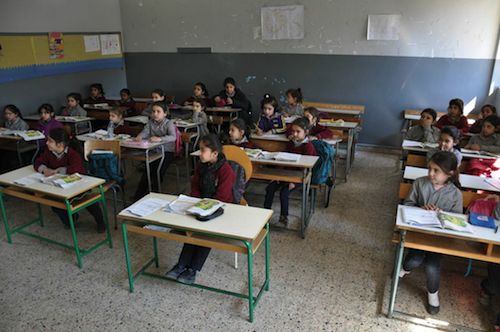
In 2015, Syrian refugee youth in Jordan had little or no access to secondary and post-secondary education. Theirworld argued that ensuring they have the opportunity to reach their full potential must be a more urgent focus of investment and innovation
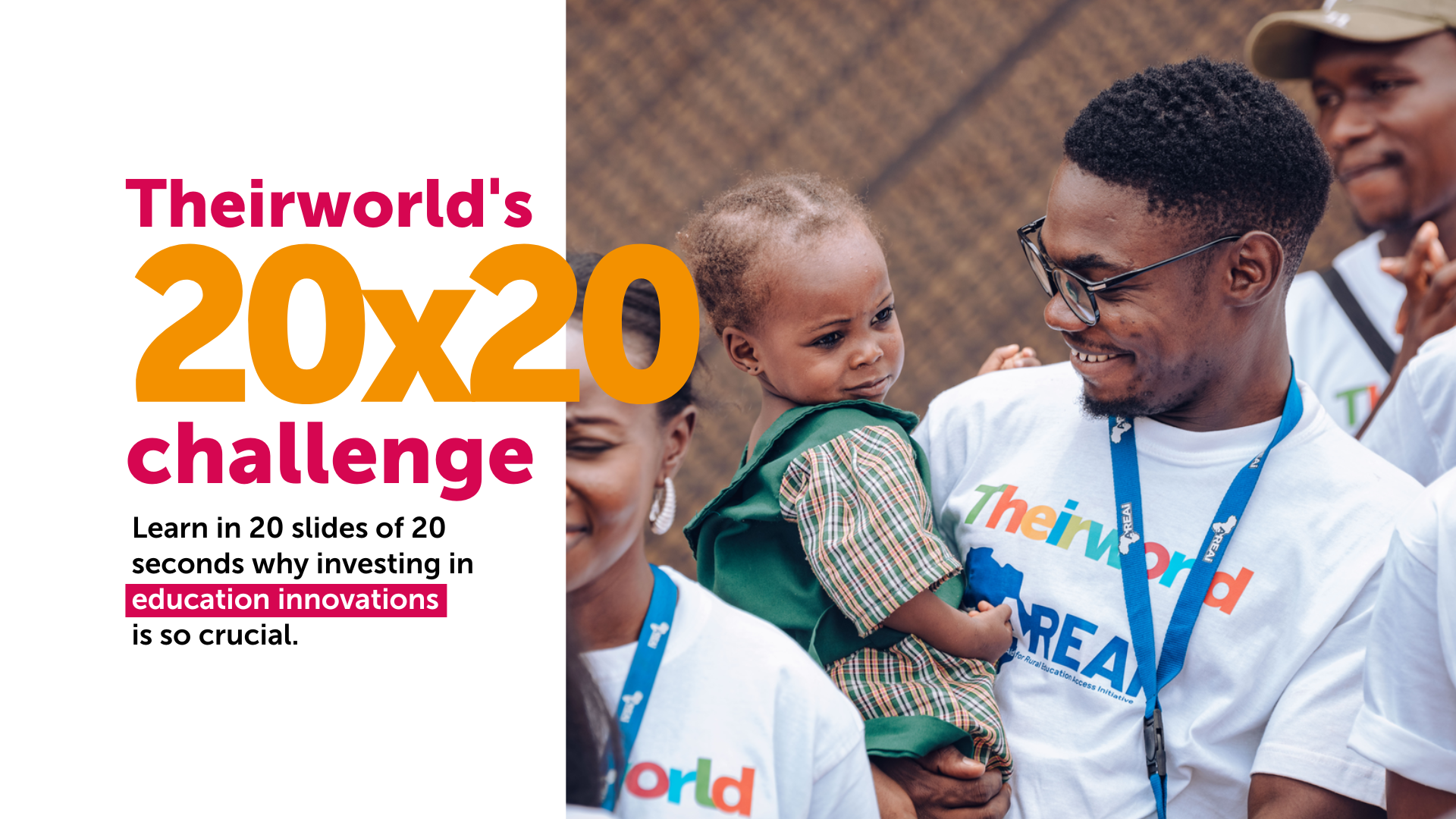
In this new episode of Theirworld’s 20×20 challenge, Angela Solomon, Theirworld and Innovation Team Projects Consultant, tells us why investing in innovative education projects is important, and how the Theirworld Innovation Awards programme is reaching over 2 million marginalised children.

In 2015 Theirworld, with A World at School and the Global Business Coalition for Education, launched a series of reports on the state of the educational crisis for Syrian refugee children in Jordan, Turkey and Lebanon.
We also recommend these reports from our organisation Global Business Coalition for Education:
- Preparing Tomorrow’s Workforce for the Fourth Industrial Revolution
- Resilience: A New Youth Skill for the Fourth Industrial Revolution
- Launching a Global Education Platform: Lessons and Recommendations from the India Pilot
- Toward a Global Education Platform: Potential Models for Harnessing Technology to Promote Education as a Global Public Good
Prefer an audio medium to better understand the connection between education and a digital society? Listen to Theirworld’s Better Angels podcasts, featuring stories from globally renowned campaigners, Nobel Prize winners, celebrities, politicians and remarkable young people who are experts in the field.
Rewriting The Code
Sarah Brown talks to Rosalind Hudnell, Vice President of Intel Corporate Affairs & President of Intel Foundation, about how technology and the private sector’s roles in #RewritingTheCode for girls’ education
Tom Fletcher Interview Special
Former British Ambassador to Lebanon and author, Tom Fletcher, discusses the importance of education and the ability to use digital platforms to effectively communicate and connect
The intertwined benefits of education and a digital society touch a diversity of related subjects. Explore the below subject pages for additional ideas and information.
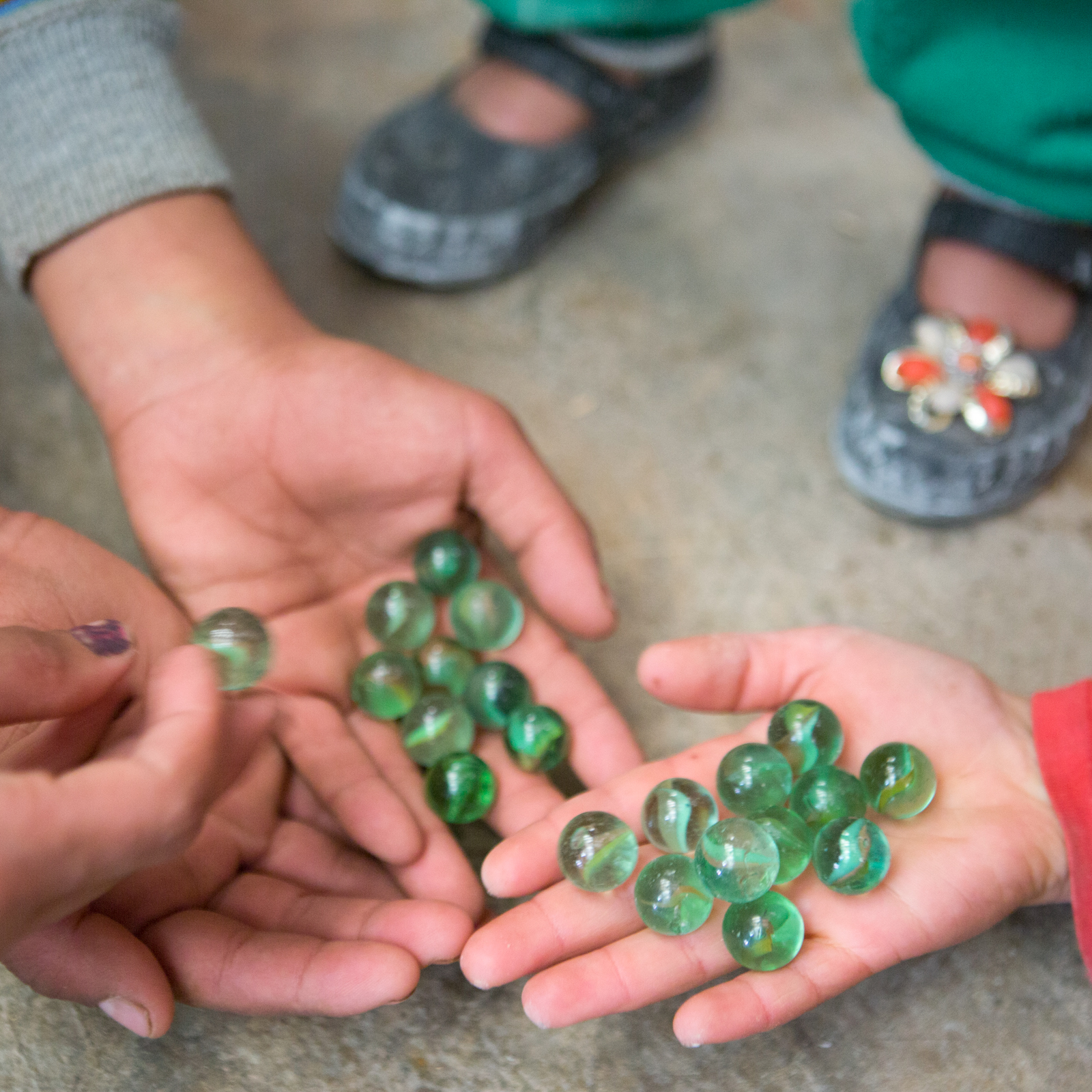
Small Grants Programme
Theirworld’s Small Grants Programme gives grants of up to £10,000 to registered charities and non-profits helping disadvantaged and overlooked young people in the UK and around the world.

Education Innovation Awards
Theirworld’s Education Innovation Awards offers non-profits, NGOs and charities the chance to secure scale-up grants and resources to help their work grow innovative ideas in reaching overlooked youth and children.
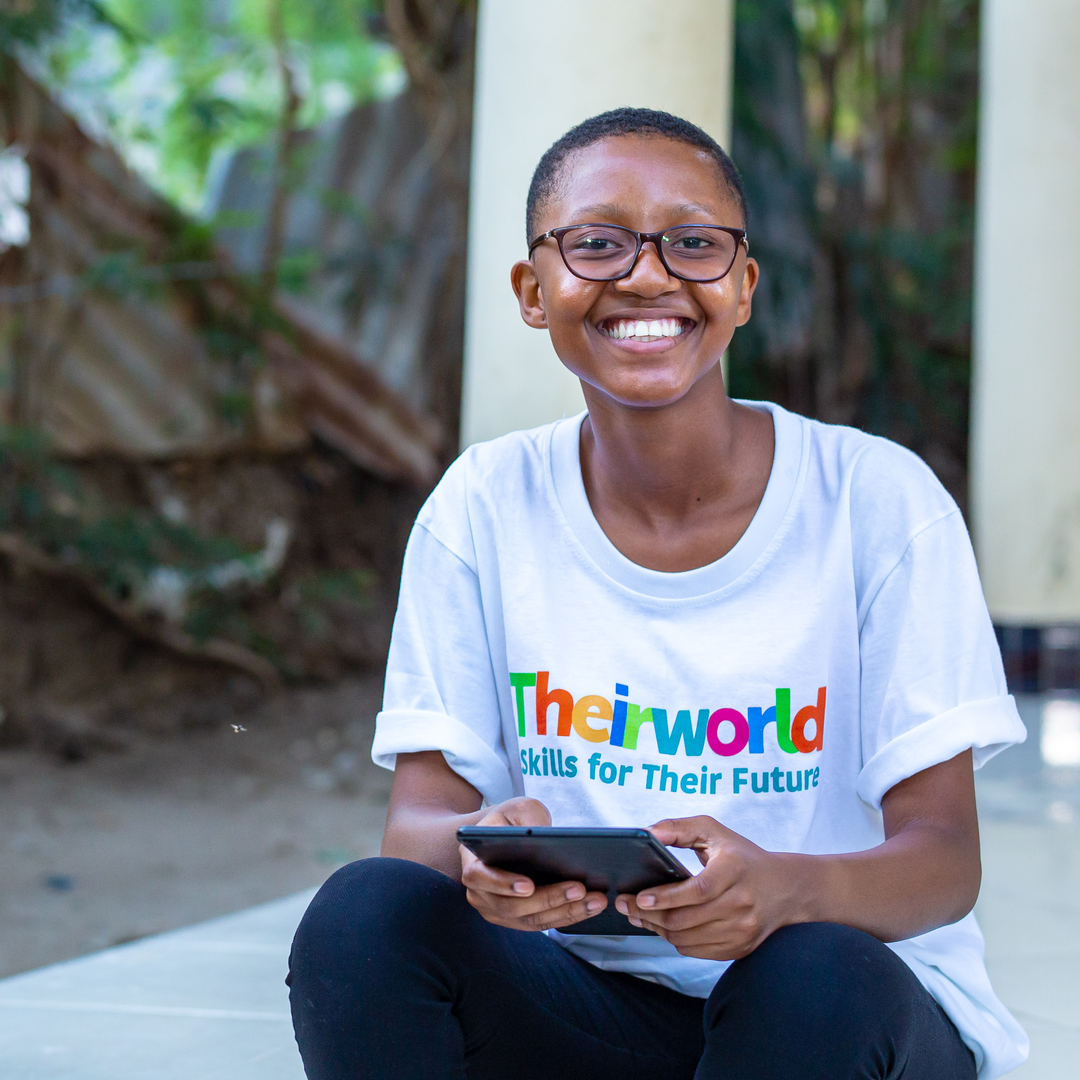
Skills for Their Future
Theirworld partners with local organisations across Africa and the Middle East to help girls gain next generation digital, coding and entrepreneurship skills, schools deliver quality education and local companies offer work opportunities
Take Action. Get Involved.
Theirworld is committed to ending the global education crisis and unleashing the potential of the next generation. Inspired to unlock big change? Support our campaigns, fundraise with us or join our Global Youth Ambassadors programme.
To end the global education crisis we’re going to need everyone to do their part, help build the pressure needed to make change.
Support our campaigns
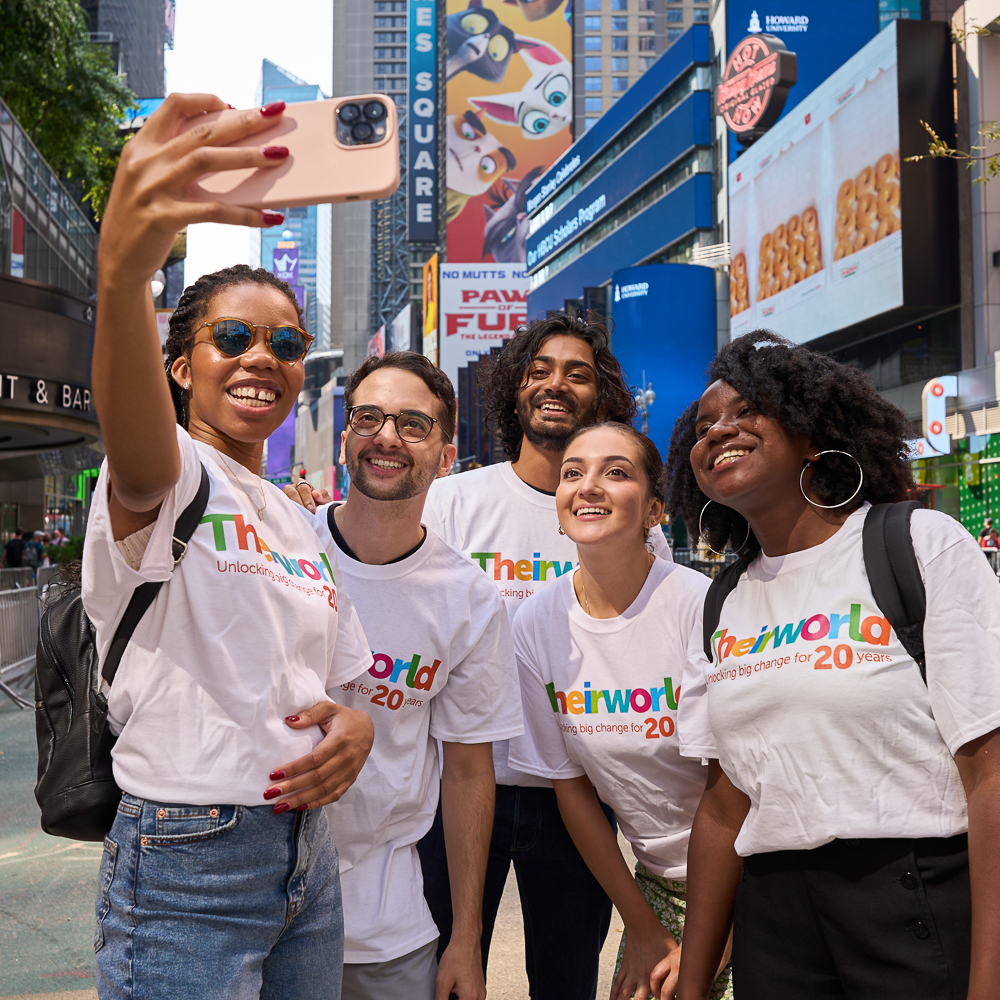
Our network of 2,000 young people in more than 100 countries across the globe working together to end the global education crisis.
Join the Global Youth Ambassador programme

Raising money for Theirworld is another great way to help us.
